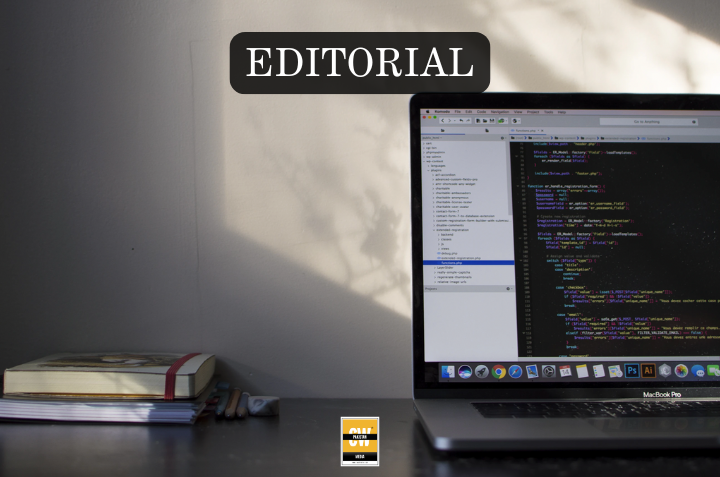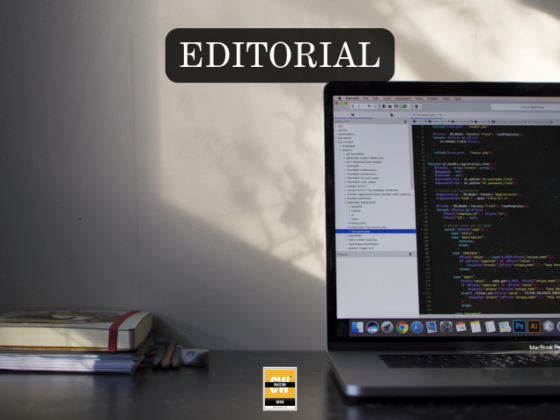The internet, so often described as a cloud, is in truth a creature of the seabed. More than 95% of international traffic travels not through satellites or the air but through cables laid across the ocean floor. These strands of glass, thinner than a garden hose, carry everything from the trades of financiers to the quarrels of families. They are, as one American analyst drily observed, the “real world wide web.” For Pakistan, perched on the Arabian Sea with ambitions to become a digital economy, these unseen arteries are both its greatest enabler and its most fragile dependency.
For two decades, Pakistan’s connectivity has rested on a handful of submarine systems with familiar names—SEA-ME-WE 4, SEA-ME-WE 5, AAE-1—running from Asia through the Red Sea and on into Europe. Geography made sense of this arrangement; the Suez corridor was the shortest distance to the continent’s markets. But geography also imposed peril. Any mishap near Alexandria, any unrest in Yemeni waters, could ripple across the entire network. The March 2025 disruption, when multiple cables in the Red Sea were severed, throttled bandwidth for weeks and forced businesses into rationing mode. It was not the first incident and will not be the last. Each time, the episode serves as a reminder that a single chokepoint can hold hostage the digital life of a nation of 240m.
Relief, at least in capacity, has begun to arrive. The PEACE cable—Pakistan and East Africa Connecting Europe—has been built with heavy Chinese involvement. It ties Karachi to East Africa and on to Marseille, with eastward branches stretching towards Singapore. Its Pakistan–Egypt segment alone can handle 96 terabits per second, a leap beyond the older systems. The 2Africa project, spearheaded by Meta alongside Vodafone, China Mobile, and other carriers, will be larger still: 45,000 kilometres of fibre looping around Africa, touching 33 countries, and designed for 180 terabits per second. A landing station is being constructed at Hawks Bay on Karachi’s coast, with activation expected by late 2025. Taken together, these systems promise to end Pakistan’s bandwidth famine.
Yet more terabits do not automatically mean greater resilience. Most of the new capacity still runs through the Red Sea, the same corridor whose fragility has been so often exposed. Piracy in the Gulf of Aden, mines laid during conflicts, even a single vessel anchor can plunge countries into digital darkness. Recognising this, policymakers in Islamabad and Dhaka have begun to emphasise alternatives. Analysts at the South & Southeast Asia Broadband forum recently argued that Pakistan and Bangladesh must invest in routes that bypass Suez entirely. Such alternatives—southward around Africa or eastward through less crowded corridors—are expensive, but they are the only true hedge against over-concentration. Engineering in this case is inseparable from geopolitics.
Geopolitics has, in fact, become the central story. Submarine cables were once treated as neutral plumbing. Today they are regarded as instruments of strategy. In Washington, regulators have moved to block Chinese companies from building or operating cables that land on American soil. A widely viewed documentary, “How America is Pushing China Out of the Internet,” framed this as prudent defence: Chinese-built systems are depicted as Trojan horses, vessels for surveillance and leverage. In Beijing, the narrative is inverted. Cables like PEACE are not aggression but insurance—a way to ensure that, should America ever sever ties, China remains connected. A second documentary, circulated on Chinese platforms, cast the Digital Silk Road as survival, not expansion. Both accounts reflect genuine anxieties.
Pakistan, as usual, sits in the middle. To rely exclusively on Chinese-backed projects would draw the suspicion of American regulators and limit access to Western partners. To lean entirely on Western consortia would make the country vulnerable if sanctions or disputes arose. Multiplicity, the ability to take capacity from every side while pledging loyalty to none, is the rational strategy. But multiplicity is expensive. Every landing requires permits, terrestrial fibre, inland data centres, and reliable power. Pakistan’s history of weak regulation and rent-seeking means that new capacity could just as easily entrench incumbents as broaden access. Without reform, Karachi may bristle with cable landings while much of the interior remains starved.
If Sino-American rivalry were the only dimension, Pakistan’s choices would already be fraught. But a third axis complicates the picture: Russia’s confrontation with the West. Since the invasion of Ukraine, European and NATO officials have grown acutely aware of the vulnerability of their own seabed infrastructure. Reports of suspicious activity near cables in the North Sea, and of outages blamed on sabotage, have prompted stepped-up naval patrols. Russia, increasingly excluded from Western systems, has turned eastward, binding its digital infrastructure more closely to China’s. The result is the steady emergence of a fragmented internet: one bloc aligned with America and Europe, another tied to China, a third drifting into Russia’s orbit. The question is no longer whether the internet might split but how far, and how fast. For Pakistan, the implication is plain: its cables are not merely technical projects but potential symbols of alignment, scrutinised by all sides.
The fragility of the infrastructure makes these contests sharper. Submarine cables are notoriously easy to damage and hard to defend. A German firm, FourNine Security, has noted that only a handful of specialist ships can carry out repairs. In contested waters, even those may be delayed. Military journals now write of the “digital seabed” as a new domain of competition, akin to airspace or outer space. Pakistan’s navy cannot hope to protect thousands of kilometres of fibre lying far beyond its coastline. Its best defence, again, is redundancy: enough routes and enough partners to ensure no single break, or single power, can paralyse the system.
The economic promise, meanwhile, is real. Ericsson’s research in 2021 argued that improved digital connectivity could add billions to Pakistan’s GDP if paired with investment in skills, cloud services, and digital infrastructure inland. Greater capacity could enable e-commerce, attract outsourcing contracts, and lower costs for households. Yet the promise is conditional. Without neutral landing stations, large incumbents may hoard capacity. Without inland fibre and reliable electricity, much of the new bandwidth will stall on Karachi’s beaches. Without regulatory reform, the benefits may be captured by a few rather than diffused across the economy.
All this raises an uncomfortable question: does Pakistan have the institutional capacity to manage cables as strategic assets rather than mere technical utilities? Other states have built neutral landing facilities to guarantee fair access, invested in inland data centres to capture value, and crafted legal frameworks for redundancy and repair. Pakistan has begun such discussions but remains some distance from implementing them. Its telecom regulators have often been more reactive than visionary. The result is a country poised to receive more bandwidth than ever before, but still unsure how to channel it.
The country is hardly unique. Across Africa and South Asia, middle economies are discovering that their digital fate rests on cables they do not own, laid in waters they cannot patrol, funded by consortia with agendas they cannot fully control. In every case, the narratives are similar: America warns of Trojan horses, China warns of choke collars, Russia turns east in search of allies. Each account reflects a piece of the truth; none reflects the whole. For countries in between, the only strategy is multiplicity. That is obvious in principle but demanding in practice.
Pakistan’s position is especially precarious. It cannot afford to rebuff Chinese projects outright; its broader economic relationship with Beijing is too deep. Nor can it alienate Western firms and regulators; they provide markets, investment, and influence. Its geography compounds the problem: routes through the Red Sea are unstable, while longer paths are expensive. Its institutions, meanwhile, have often failed to translate capacity into equitable access. The result is a policy challenge as complex as any in Islamabad: how to balance great-power rivalry while building domestic resilience.
What lies beneath Karachi’s beaches, then, is more than glass and steel. It is the embodiment of the country’s hopes for growth, its vulnerability to distant quarrels, and its place in a world where the internet itself is fragmenting. Pakistan cannot dictate the rivalry between Washington and Beijing, or the confrontation between Russia and the West. It cannot calm the Red Sea or patrol the North Sea. But it can decide whether to tie its digital future to a single corridor or to weave a web of alternatives. That choice, more than any capacity chart or diplomatic slogan, will determine whether the promise of new cables is liberation—or leash.
Follow the SPIN IDG WhatsApp Channel for updates across the Smart Pakistan Insights Network covering all of Pakistan’s technology ecosystem.






